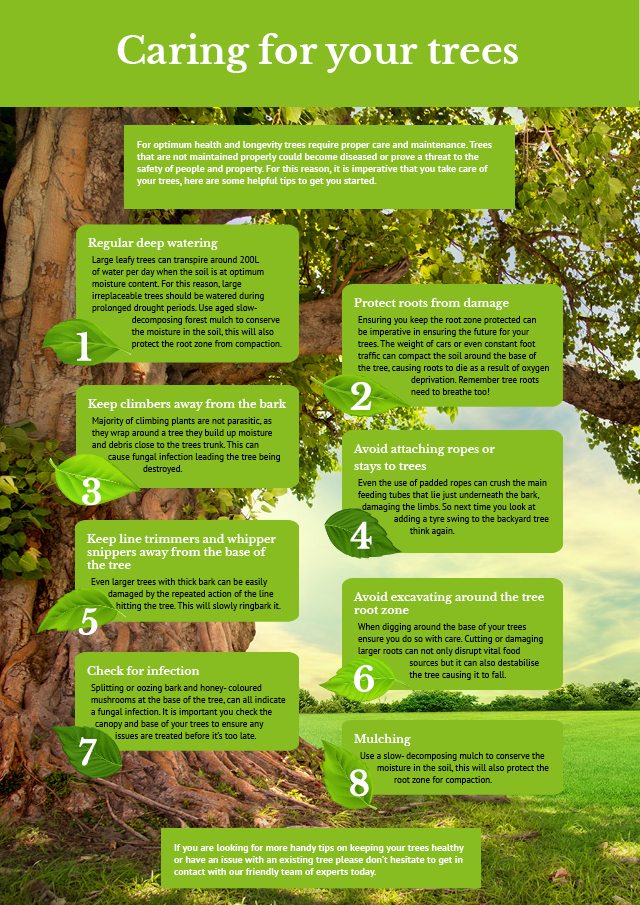Discover Exactly How To Preserve A Growing Setting After Tree Elimination
Discover Exactly How To Preserve A Growing Setting After Tree Elimination
Blog Article
Post By-
When it concerns seasonal tree care, ensuring correct administration before and after elimination can substantially affect the wellness and looks of your landscape. By comprehending the required actions associated with analyzing tree health and getting ready for removal, you can proactively protect your property. Yet what regarding the critical practices to comply with as soon as the tree is gone? Remain tuned to discover the vital post-removal care procedures that will help you cultivate a thriving and lasting setting for your trees.
Pre-Removal Tree Care
Before attending to the removal of a tree, it's vital to focus on pre-removal tree treatment. Start by assessing the tree's health and wellness and structural stability. Look for indicators of disease, insect invasions, or any kind of architectural issues that might posture a safety and security threat throughout removal. It's necessary to consult with a qualified arborist to identify the very best course of action.
Trimming dead or infected branches can stop further damage to the tree and make sure a smoother elimination procedure.
Additionally, think about the ecological effect of getting rid of the tree. Trees play a crucial function in our community, so planting a brand-new tree in an appropriate place can aid balance out any loss. Make certain that you have the essential licenses and approvals for tree removal, specifically if the tree is protected by neighborhood guidelines.
Seasonal Maintenance Tips
Analyzing your tree's needs throughout the year is imperative for its health and wellness and longevity. To keep your trees in top problem, adhere to these seasonal upkeep suggestions.
In spring, focus on pruning to eliminate dead or broken branches and encourage new growth.
Summer season requires regular watering, specifically throughout dry spells, to ensure your tree stays hydrated.
As autumn strategies, keep an eye out for very early indications of disease or anxiety, and consider applying compost to safeguard the origins throughout winter.
In winter, be cautious when removing snow from branches to stop breakage, and continue to monitor your tree's overall health and wellness.
Keep in mind to change your care routine based on the specific needs of your tree types and local environment. By staying attentive and proactive throughout the periods, you can help your trees prosper and thrive for many years ahead.
Post-Removal Tree Care
To ensure the health and wellness of your landscape even after tree removal, proper post-removal treatment is necessary. After a tree is removed, it's vital to load the remaining opening with topsoil and compact it to stop settling. This will assist keep the honesty of the ground and stop prospective hazards in the future.
Take into consideration planting brand-new plants instead of the removed tree to recover the balance and aesthetic appeals of your landscape. Frequently water the location to promote the development of new plants and stop soil disintegration.
Check the bordering trees for any indicators of disease or anxiety that might have been brought on by the eliminated tree. Keep https://www.architecturaldigest.com/story/landscape-designers-coronavirus-challenges out for bugs that may've been brought in to the previous tree and take safety nets to shield the continuing to be vegetation.
If required, talk to a specialist arborist to assess the influence of the removal on the bordering trees and determine any kind of added treatment needed. By adhering to these post-removal care actions, you can make certain the continued health and beauty of your landscape.
https://messiahwpibu.blog2freedom.com/31214305/seasonal-tree-management-techniques-for-caring-for-trees-before-and-after-their-removal , positive seasonal tree treatment is important for preserving the health and balance of your landscape. By examining tree health and wellness, pruning, and consulting with an arborist prior to elimination, you can make sure a risk-free process. After removal, filling up the hole, planting new greenery, and normal watering will promote new growth and avoid erosion. Remember to examine surrounding trees for disease and look for additional care procedures from an arborist to keep your landscape thriving.
